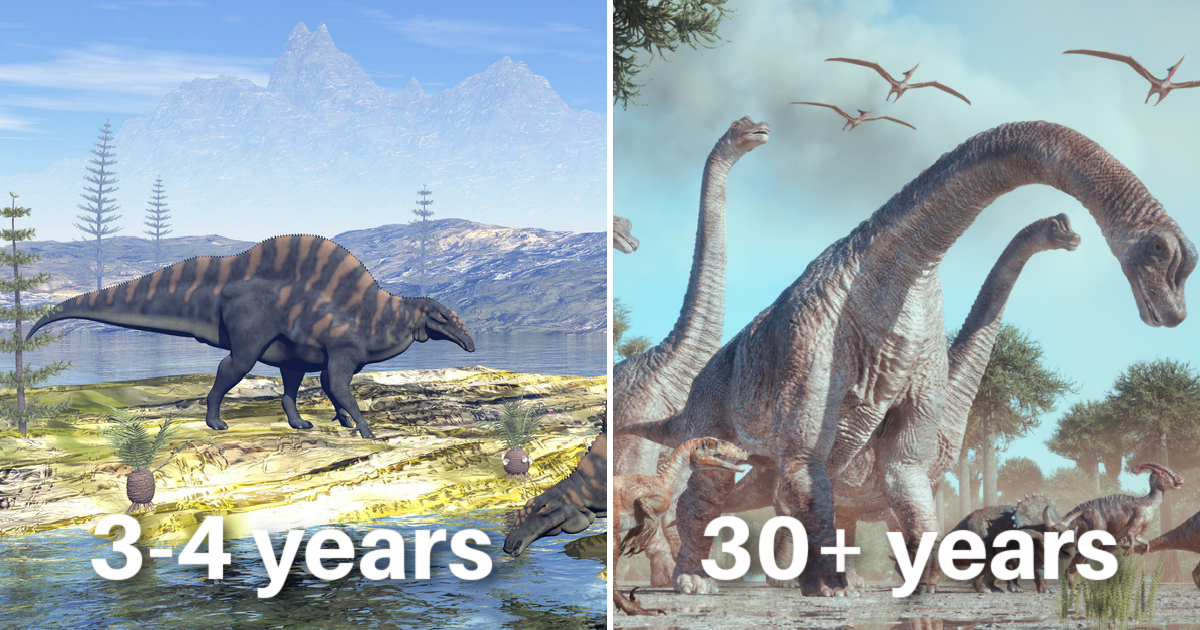
So many of us go through a dinosaur phase when we’re kids. We love to learn about them, read about them, go to museums to see their bones, and imagine what it might have been like to see them in real life.
You might never have asked how long one might have lived, though – so let’s learn about it now!
Professor Paul Barrett, head of London’s Natural History Museum’s fossil vertebrates, says we only have to look to the trees.
In that, dinosaur bones can be dated in much the same way – by counting the rings inside.
“We can generally work out how long it takes for an animal to reach full size or adulthood, but that doesn’t tell us how long they continued to live as adults. …One thing we’ve noticed with dinosaurs, which probably doesn’t hold for other animals, is that they tend to die while they’re still growing.”
Which means they didn’t often reach their full size potential – kind of mind-boggling when you think about it.
Like with a lot of animals today, size seems to correlate with longevity.
“Basically, the larger the animal is, the longer its lifespan is, so the big ones were probably around for quite a long time, the smaller ones much less so.”
I don’t know about you, but I was curious what killed dinosaurs beyond being eaten by other dinosaurs, and Dr. Barrett had an answer for that, too.
“All the kinds of things that you’d expect a living animal to die of: diseases, bad luck, being struck by lightning, hit by a tree, or getting caught up in a flood. But the major causes of death for living animals are generally starvation or dehydration, due to lack of food and water from seasonal droughts. Then, to some extent, diseases, predation, and really old age, just everything wearing out and not being able to chew or digest things anymore.”
But as for the question of the day – which is how long they lived – Barrett can give us a range.
“Very large sauropod dinosaurs probably took about 30-35 years to reach maximum size, and we assume if they did that maybe they would have lived a bit longer beyond that period so maybe 30, 40, or 50 years for the really big dinosaurs.
Smaller dinosaurs – things like ornithopod dinosaurs – look like they reached their full body size at around four to five years. After three or four years, unless they were really lucky, they were probably dying.
People used to believe dinosaurs must live long lives, like their relatives the crocodiles or giant tortoises – close to a hundred years, much like humans.
It’s surprising to learn they grew really, really fast and likely only lived half that number – if they were lucky.